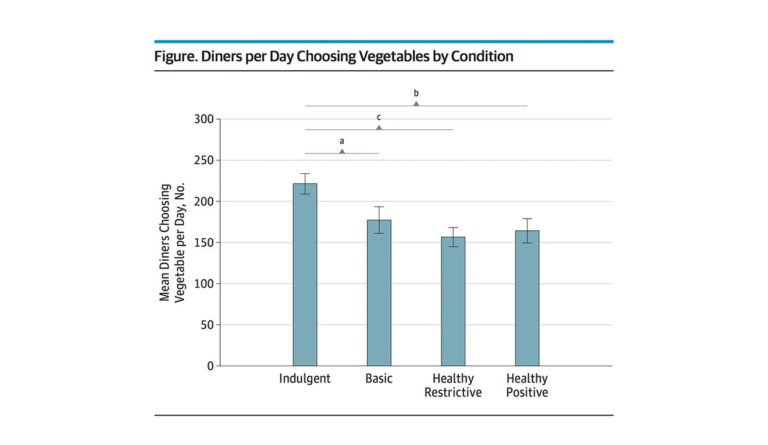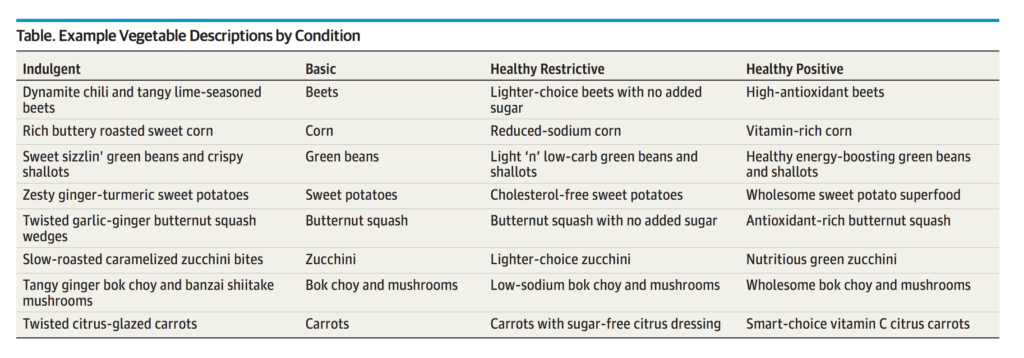Battling Obesity by Rebranding Healthy Foods
Twisted carrots and dynamite beets? A new study suggests a surprising strategy to battle the ongoing obesity epidemic in the US.

Read Time: 2 minutes
Published:
How can we make healthy foods just as appealing as unhealthy foods? This was the question Turnwald, et al. asked in order to develop a new strategy to battle the ongoing obesity epidemic in the United States. Their study, published in JAMA, examined the names given to foods and how popular they were in the Stanford University cafeteria. Importantly, the authors write: “No changes were made to how the vegetables were prepared or served.”

Photo via Bradley Turnwald, Danielle Boles, and Alia Crum, Association Between Indulgent Descriptions and Vegetable Consumption: Twisted Carrots and Dynamite Beets. JAMA Internal Medicine.
As shown above, the indulgent naming was by far the most popular, followed by the basic, healthy positive, and healthy restrictive. The authors reported, “Labeling had a significant effect on both the number of diners selecting the vegetable (P = .01) and the mass of vegetables consumed (P = .05).” Indulgent labeling resulted in 41% more people eating vegetables compared to the healthy restrictive naming.
Through just a bit of rebranding, the mean number of diners eating vegetables per day went up significantly. This can be an effective, very low cost public health strategy that may help to improve the health indicators in the U.S., where 36.5% of adults and 17% of kids are obese and where 9.4% of the population has diabetes.
Databyte via Bradley Turnwald, Danielle Boles, and Alia Crum, Association Between Indulgent Descriptions and Vegetable Consumption: Twisted Carrots and Dynamite Beets. JAMA Internal Medicine.



